Pie dough is one of those things our grandma taught us to always make from scratch. She would make pie dough most days that we were with her. From laying it on top of a boysenberry crisp to lining it in the bottom of a dutch crumb apple pie, she was always mixing, rolling, and baking pie dough. She insisted it was the easiest thing to make with some flour, shortening, and a little bit of ice water.
Each time she made it, she eyeballed the ingredients and used only her hands. We were amazed every time at how well the dough would turn out despite the lack of measurement and recipe. She was a pro and over the years taught us her tips for the perfect pie dough. To this day, we do (almost) everything just like Grandma taught us. Unlike Grandma, for the best flavor, we use butter instead of shortening. To make this dough even more foolproof, also leverage a food processor.

Making the pie dough:
To make the pie dough, place the flour and salt into the base of a food processor. Chop the cold butter into 1 inch pieces. You can use refrigerated or even frozen butter to ensure some of the butter remains in little specks throughout the finished dough. These specks of butter freckled throughout the dough will create air pockets in the baked pie creating a flaky, tender crust. When the butter melts, it releases steam and creates little pockets in the pie dough. This process is what makes flaky biscuits, croissants, and so many other delicious buttery treats. On the “spectrum of flakiness”—croissants to biscuits to pie dough—pie dough is at the end of the flake spectrum. In other words, we just want a few flecks in our dough to create the perfect flake throughout.
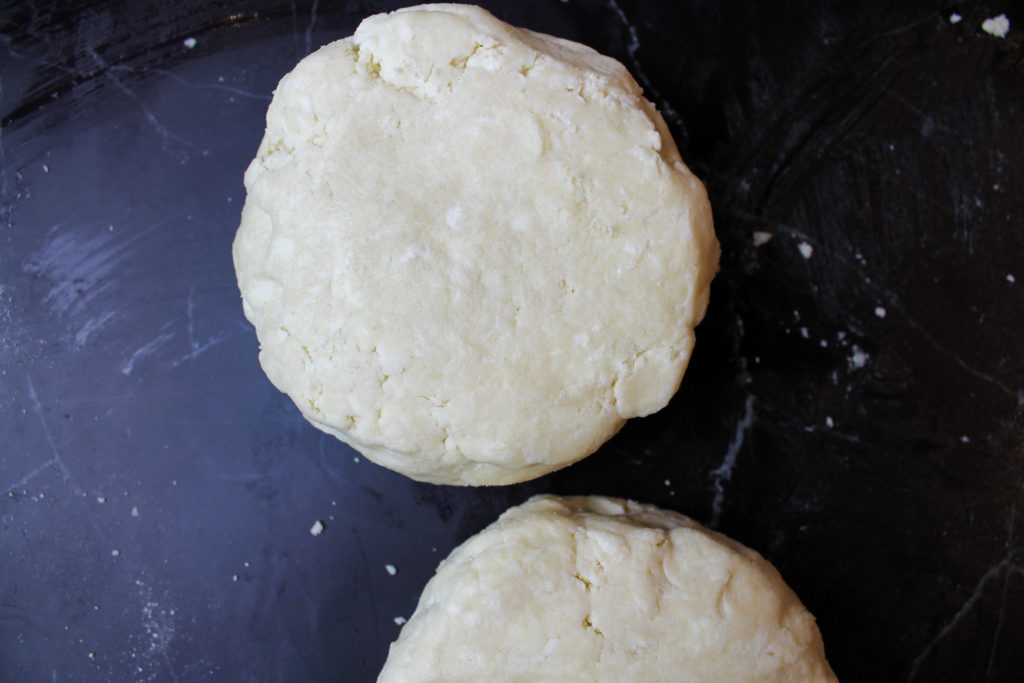
After the butter has been added, pulse until butter becomes pea sized pieces. Some will be bigger, some smaller and that’s exactly what you want. When it reaches this stage, stream in the ice water. Continue to pulse until the mixture is crumbly but just before it forms a ball. Once it’s at this crumbly stage, transfer the shaggy dough onto a smooth surface. Press the dough together until it forms a ball. Once it forms a ball, cut it in half. With each half, form flatten disks that are around 5 inches across. Wrap them tightly in cling wrap and refrigerate. Refrigerate at least 1 hour and up to 1 week and roll out when ready to use. This dough can also be frozen, just thaw overnight in the fridge before rolling out.
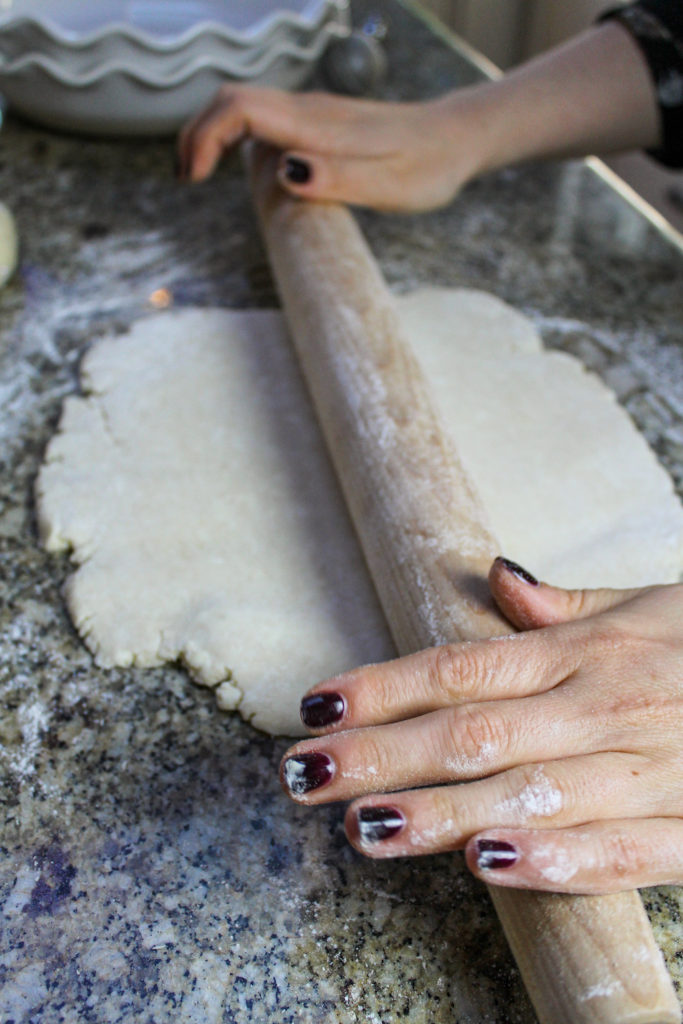
Tips for the best pie dough:
- Cold – the butter and ice water should be very cold. Make sure the ice water sits before streaming. The butter can be refrigerated or even frozen before cutting into cubes.
- Crumble – pulse the dough until crumbly then dump it out onto a surface to form a ball. If you continue pulsing in the food processor until it forms a ball, there will be fewer speckles of butter scatter throughout. This will result in a less flaky pie dough.
FAQ:
Q: Can I use a different type of flour for this recipe?
A: All-purpose flour is recommended. Other flours or combination of flours will change the texture and consistency of the crust.
Q: Can I use margarine or shortening instead of butter?
A: Butter is recommended for the best flavor and texture, but you can use margarine or shortening as a substitute. Keep in mind that it may affect the taste and texture of the crust.
Q: Can I make the pie crust ahead of time?
A: Yes, you can make the pie crust ahead of time and refrigerate it for up to a week or freeze it for up to a month. Just make sure to tightly wrap it in cling wrap to prevent it from drying out or absorbing any odors from the refrigerator or freezer. Allow it to defrost in the refrigerator overnight before rolling it out.
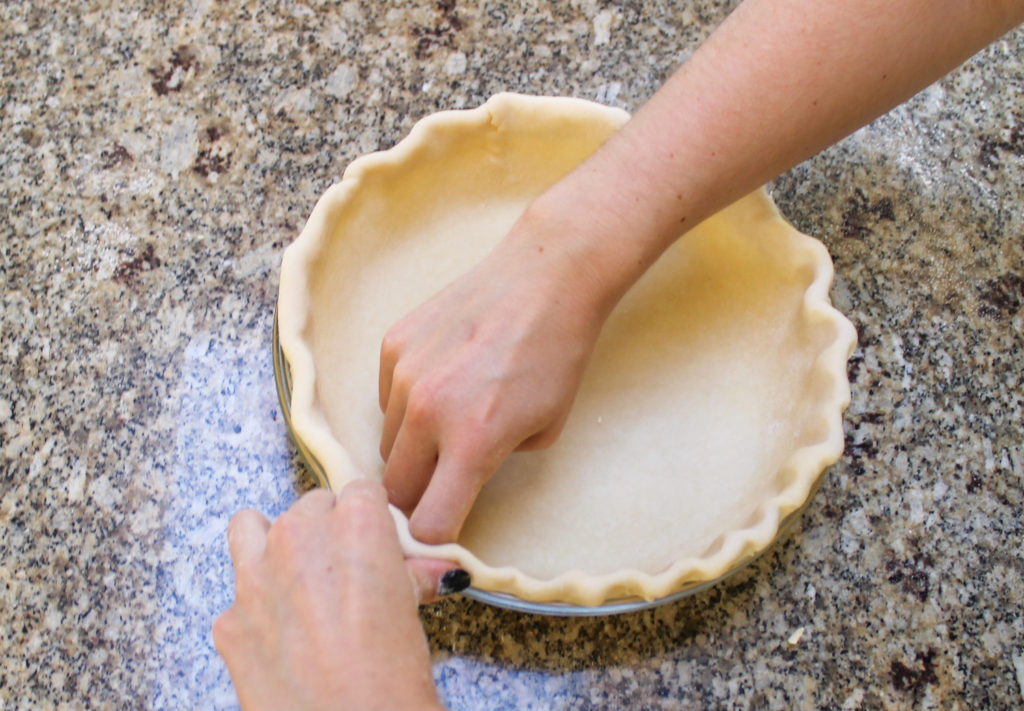
Ingredient Notes:
- Flour: For this recipe, use all-purpose flour. Other flours or combinations will need a different hydration (percentage of water) so we recommend only using all-purpose here.
- Butter: Using cold butter is crucial for achieving a flaky pie crust. Chop the butter into 1 tablespoon squares and keep them chilled in the refrigerator until ready to use.
- Water: Use ice-cold water for best results. The cold water helps to keep the butter in the dough cold and all the butter to remain in pieces, which creates pockets of air when baked, resulting in a flaky crust.
Pie Dough
Ingredients
- 3 cups flour
- 20 Tablespoons butter chopped into 1 tablespoon squares
- ½ cup water iced
- 1 teaspoon salt
Instructions
- Place flour and salt into the base of a food processor
- Scatter butter chunks throughout the flour
- Pulse the mixture until the butter is mainly pea sized pieces (some will be larger, some smaller that’s what you want. It allows for the majority of butter to combine with the dough while leaving some larger pieces that will form buttery air pockets making a flaky crust)
- Remove the top piece of the food processor, to stream in the water. Continue to pulse and stream in ½ cup of ice water until mixture is crumbly (just before it forms a ball)
- Once the mixture is crumbly transfer it to a smooth (ideally cool) surface
- Slightly work the dough into a ball. This should just take a few turns of the dough. There should be mainly consistent dough with some small pieces of butter freckled throughout
- Once the dough has formed into a ball, cut it in half and shape into disks about 5” by 1”. Creating this shape will make it easier to roll into an even circle. Wrap tightly in cling wrap
- Refrigerate for at least 1 hour before baking. You can leave it in the fridge for up to a week or freezer for up to a month
- To roll out, take chilled pie dough (if frozen, defrost in the freezer overnight) and place onto a lightly floured surface
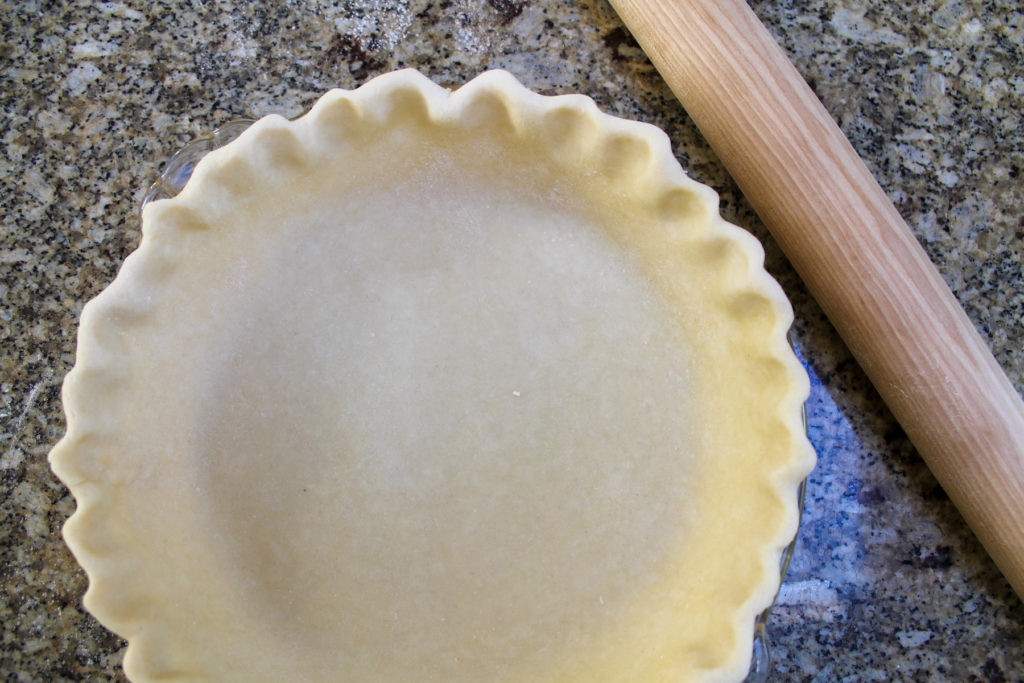
Entertainer’s Note:
You can make your pie dough a month in advance. Just make it, form it into balls, and wrap it tightly in plastic wrap. After it’s wrapped, place it in the freezer. Place it in the fridge the night before you plan to use it.

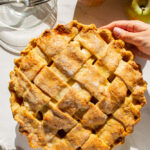
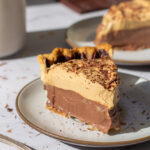
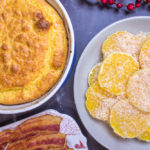
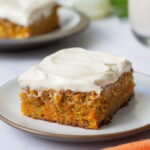
[…] make the pie, start with a par-baked pie crust (or blind baked). You can find our crust recipe here. Once the crust has baked, start on the berry […]